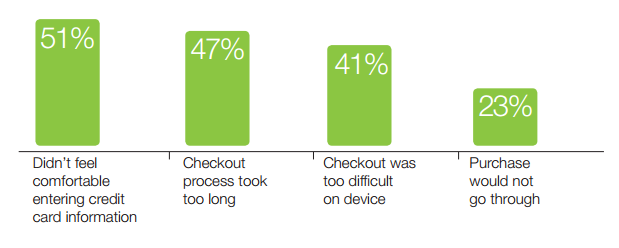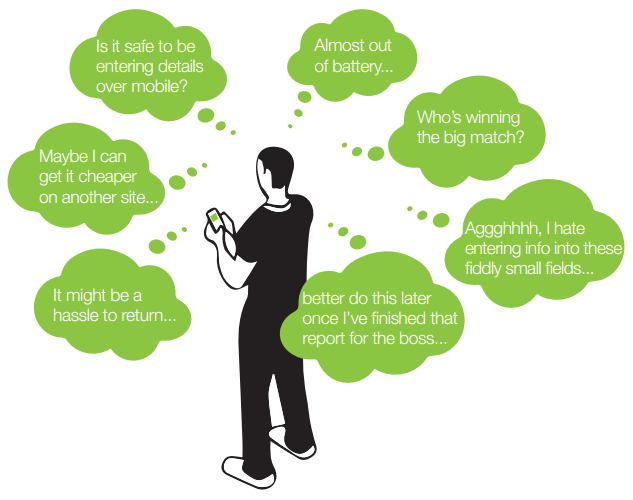Five Tips On Reducing Abandonment in mCommerce
The global online retail market is now worth $1,064 billion, is growing by circa 20% a year and on average we all spend $1,354 a year. Smartphones and tablets are responsible for 23% of traffic, and for about 15% of sales and current forecast growth rates are 39% , twice the growth rate of desktop devices.
Jumio, an online and mobile identity verification and payment company released recently a study on abandonment in the case of mobile transactions, determining an alarmingly high level of 66%.
Among the biggest reasons why people aren’t finalizing two thirds of transactions are: fear of entering credit card information, the checkout process is considered to take too long or too complicated, the purchase process doesn’t work.
Jumio presents 5 factors that could reduce the number of people abandoning the virtual baskets:
Speedup the payment process – One way this could be done is by using more intuitive error messaging to help customers quickly is they entered data wrongly. Jumio also provides a solution to speedup the data entering process by allowing customers to scan their payment card or their ID documents instead of typing in all the data. Reducing this process from 60 seconds to about 5 seconds, translates to less abandonment.
Do a design for smartphones that adapts for larger devices too – In a recent survey by EPiServer, 48% of smartphone users are stating that they are abandoning transactions due to “having to navigate both horizontally and vertically to view the page“ (48%) and 35% are abandoning due to “links that are too small”. So build with mobile in mind.
Don’t clear the shopping basket – We’re doing a lot on our phones and often times we’re interrupted by other activities, so one of the biggest reasons why shops are losing sales is exactly the way their carts are built, namely, if you abandon a session in a browser, when you come back later you find the basket empty.
Don’t force users to create accounts – Many retailers are insisting that we signup for accounts when we buy something at their shops. But now they can opt to just request an email address to send the purchase confirmation and then used cookies to track pages visited to get a picture on what are they after.
Cast away customer’s fears – Returns for online retail transactions are currently averaging at 14.6%, so a proactive return policy is definitely a must have for retailers. Another question that pops in buyer’s head is “When can I get it?, they want to know exactly when they’ll be able to put their hands on the new laptop. So merchants that take steps to cool down customer fear by clearly signposting their returns policy or by clearly showing when to expect delivery are making it easier for visitors to go ahead and complete their purchase. Addressing customer fear at point of checkout will reduce abandonment.
These are just the biggest factors, but there are certainly many design and psychology tweaks that can be applied to reduce abandonment.










